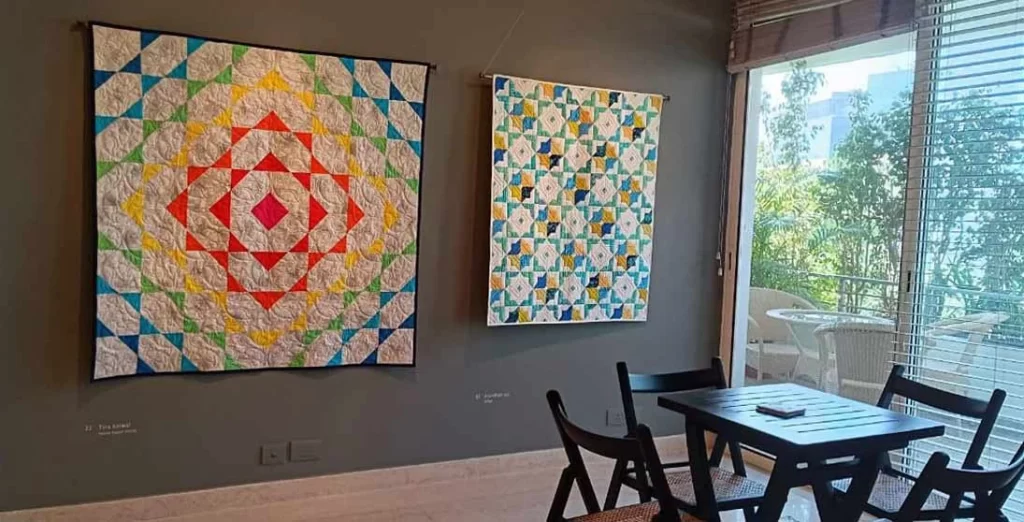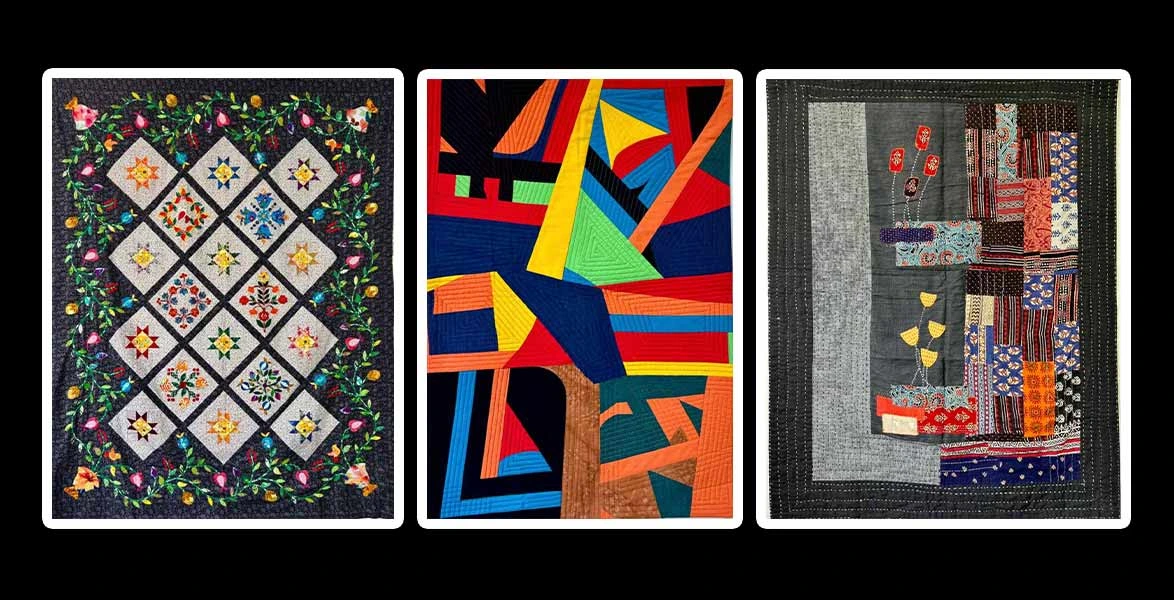Quilts are not just functional items in India; they are a vibrant cultural expression. From the intricate designs of Kashmiri shawls to the vivid block prints of Rajasthan, quilts have been an integral part of India’s textile tradition for centuries. However, in recent years, India’s quilt complex has evolved, blending centuries-old techniques with modern designs.
In this article, we explore how India’s quilt-making tradition is growing, the shift from traditional to contemporary methods, and how this craft has found new relevance in global markets.
You May Also Like: Past Continuous with TAPI in Ahmedabad

The Historical Significance of Quilts in India
Quilts in India have a deep-rooted history that ties into the country’s rich textile heritage. Historically, quilts were primarily made for practical purposes. They were used to protect against the extreme cold of northern India or to provide comfort in rural homes. The materials used were often locally sourced:
- Cotton was the most common fabric, especially in warmer regions.
- Woolen quilts were made in places like Kashmir where the winters are harsh.
- Silk quilts were reserved for the royal families and affluent classes in regions like Rajasthan.
Indian quilts were typically made in rural settings, where skilled artisans used simple tools to create intricate patterns. Kantha quilts, for example, were a popular form of hand-stitched bedding from Bengal. The design often featured geometric or floral motifs.
In places like Kutch (Gujarat), the traditional Kutch quilts were made by women who practiced the art of kutch work or embroidery, incorporating mirrors and threads into the quilts. These quilts are prized for their vibrant colors and meticulous handiwork.
The Rise of Modern Quilting in India
India’s growing quilt complex is not just about tradition—it’s also about evolution. Over the past few decades, there has been a marked shift toward more contemporary styles of quilt-making. The younger generation of quilters is infusing traditional methods with modern aesthetics, creating pieces that appeal to both Indian and international markets.
The global fascination with handmade crafts and the desire for unique, eco-friendly home decor has contributed to the rise of modern quilting in India. Quilts made with organic cotton, hand-dyed fabrics, and unique prints are now popular in international markets, particularly in Europe and the United States.
The Influence of Western Quilting Styles
Incorporating Western quilting techniques has influenced the Indian quilt scene. International quilting trends like patchwork and applique have become widespread in India. Additionally, there’s a growing interest in using vintage fabrics to create one-of-a-kind quilts. These influences have allowed Indian quilters to create designs that appeal to global tastes while still maintaining their cultural heritage.
Modern Indian Quilters
Artists like Rita Bhatia and Shallu Jindal have brought quilting into the 21st century. Their innovative designs, which mix traditional Indian motifs with modern patchwork techniques, have helped propel Indian quilts into the contemporary art scene. These quilts are not only for bedding—they are pieces of art displayed in galleries and exhibitions worldwide.
The Quilting Communities in India
India’s growing quilt complex is not just about individual artisans but also about thriving quilting communities. These communities, especially in places like Jaipur, Bengal, and Kolkata, have become hubs for craft lovers.
Quilt Workshops and Retreats
Across India, there has been an uptick in quilting workshops, retreats, and exhibitions. These events have helped foster a sense of community among quilters. Aspiring artisans can attend these events to learn new techniques and share their work. The Indian Quilt Festival is one such event that celebrates the craft with workshops, quilting exhibitions, and discussions on the future of quilting in India.
Support for Women Artisans
In many regions of India, quilting is a women-dominated craft. Women artisans, particularly in rural areas, rely on quilting for economic independence. Through various government and NGO-led initiatives, these women are receiving training, resources, and market access to help them sell their quilts in national and international markets.
One such initiative is the SEWA (Self-Employed Women’s Association), which helps rural women quilters get access to new designs, skills, and market opportunities. This initiative has contributed to making quilting a sustainable livelihood for many women in the country.
The Business of Quilting: India’s Export Market
India’s quilt complex is rapidly expanding, particularly in terms of international trade. The global market for handmade quilts is booming, and India is a key player in this sector. Quilts made in India are in demand for their rich artistry and craftsmanship.
India is now one of the leading exporters of textile products worldwide. Quilts, especially those that feature traditional Indian craftsmanship like Kantha, Saree quilts, or Kalamkari designs, are sold in major international retail chains, including Pottery Barn and Crate & Barrel.
The demand for eco-friendly quilts made from natural fibers, like organic cotton and wool, is also growing. Indian manufacturers are tapping into this trend by creating quilts that are sustainable and cruelty-free, meeting the expectations of eco-conscious consumers.
The Cultural Impact of Quilts in India
While the quilt-making tradition in India has primarily been associated with utilitarian use, its cultural significance is also undeniable. Quilts, as pieces of art, carry the stories of the families and regions from which they come. The colors, designs, and materials used in Indian quilts reflect a rich heritage that tells the stories of history, religion, and local culture.
The act of quilt-making itself has cultural importance in India. Many families view the crafting of quilts as a ritualistic process, involving the entire family. Quilting often serves as a form of storytelling, as artisans create quilts with motifs that reflect their community’s beliefs and traditions.
Challenges in India’s Growing Quilt Complex
While India’s quilt complex is expanding, there are challenges ahead:
- Sustainability Concerns: There is a growing need for eco-friendly materials and processes in quilting.
- Cultural Preservation: As global trends influence the quilt market, there’s a risk of losing some traditional styles and techniques.
- Market Access for Rural Artisans: Despite improvements, rural quilters still face barriers to accessing larger markets.
The Future of Quilting in India
The future of quilting in India looks bright. With increasing demand for handmade and sustainable products, Indian quilts are set to continue making an impact globally. The fusion of traditional designs with contemporary techniques will likely keep Indian quilts in the spotlight.
For those in India, quilting represents not just a craft, but a growing industry that offers economic opportunities and fosters a deeper connection with cultural heritage. As India’s quilt complex grows, so does its significance—both in the country and abroad.
India’s quilt-making tradition is a testament to its rich history and vibrant craft culture. Whether you’re an enthusiast or a casual observer, the growing quilt complex offers a fascinating look at the intersection of artistry, culture, and commerce.











[…] You May Also Like: India’s Growing Quilt Complex […]